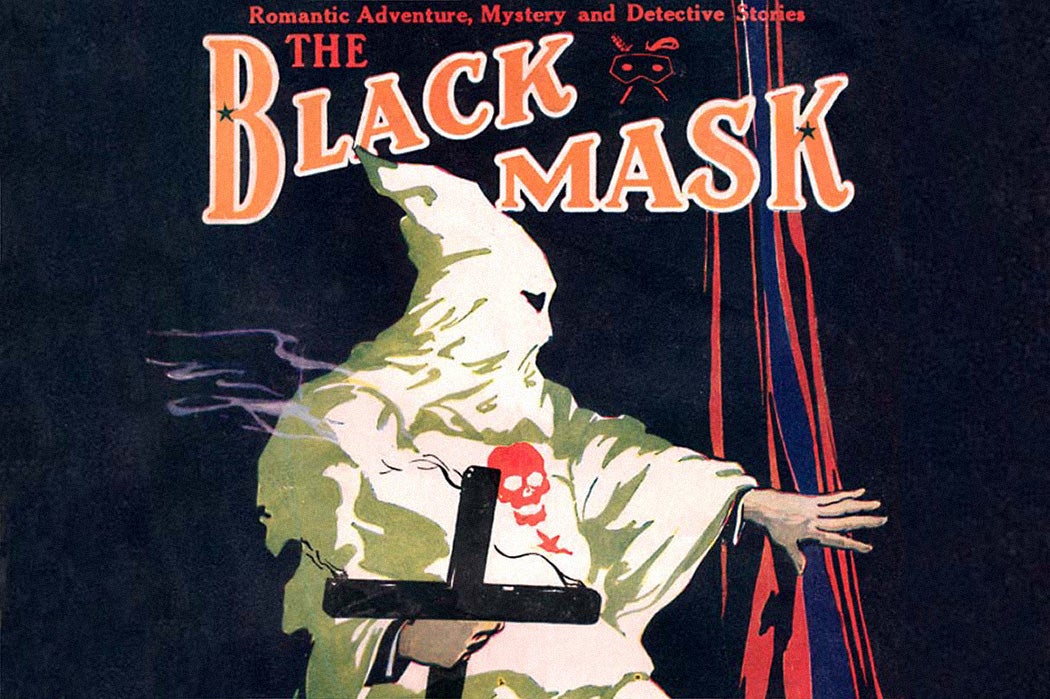A century ago, in the pages of the pulp magazine Black Mask, the writers Carroll John Daly and Dashiell Hammett invented hard-boiled crime fiction. They positioned Black Mask as the flagship of this influential genre and used their respective detective characters Race Williams and the Continental Op to battle the Ku Klux Klan’s nativist racial fantasy with two-fisted gusto and a spray of bullets.
Black Mask’s origin hardly prepares us, however, for the magazine’s legacy. It was launched in April 1920 by the editors of The Smart Set, H. L. Mencken and George Jean Nathan, to subsidize that more prestigious publication and to sop up some of the fiction submissions that didn’t quite fit in the pages of their “Magazine of Cleverness.” At the helm of The Smart Set since 1914, Mencken and Nathan aimed for the ironic, sophisticated, and urbane market years before The New Yorker debuted in 1925. F. Scott Fitzgerald, James Joyce, Dorothy Parker, Willa Cather, Ezra Pound, Eugene O’Neill, Somerset Maugham, and Anita Loos, among many others, were found in its pages.
But literature was as hard a sell then as it is now. Mencken and Nathan had figured out how to jumpstart pulps and sell them off quickly for a nice mark-up they could channel into their more respectable publication. Using pseudonyms, they pumped and dumped The Parisienne and Saucy Stories. These “sideline pulps” promised more eroticism than they delivered, writes curator Gabrielle Dean in her examination of the “clever packaging” the editors used in The Smart Set family of publications. As always, sex sold; and that’s what counted.
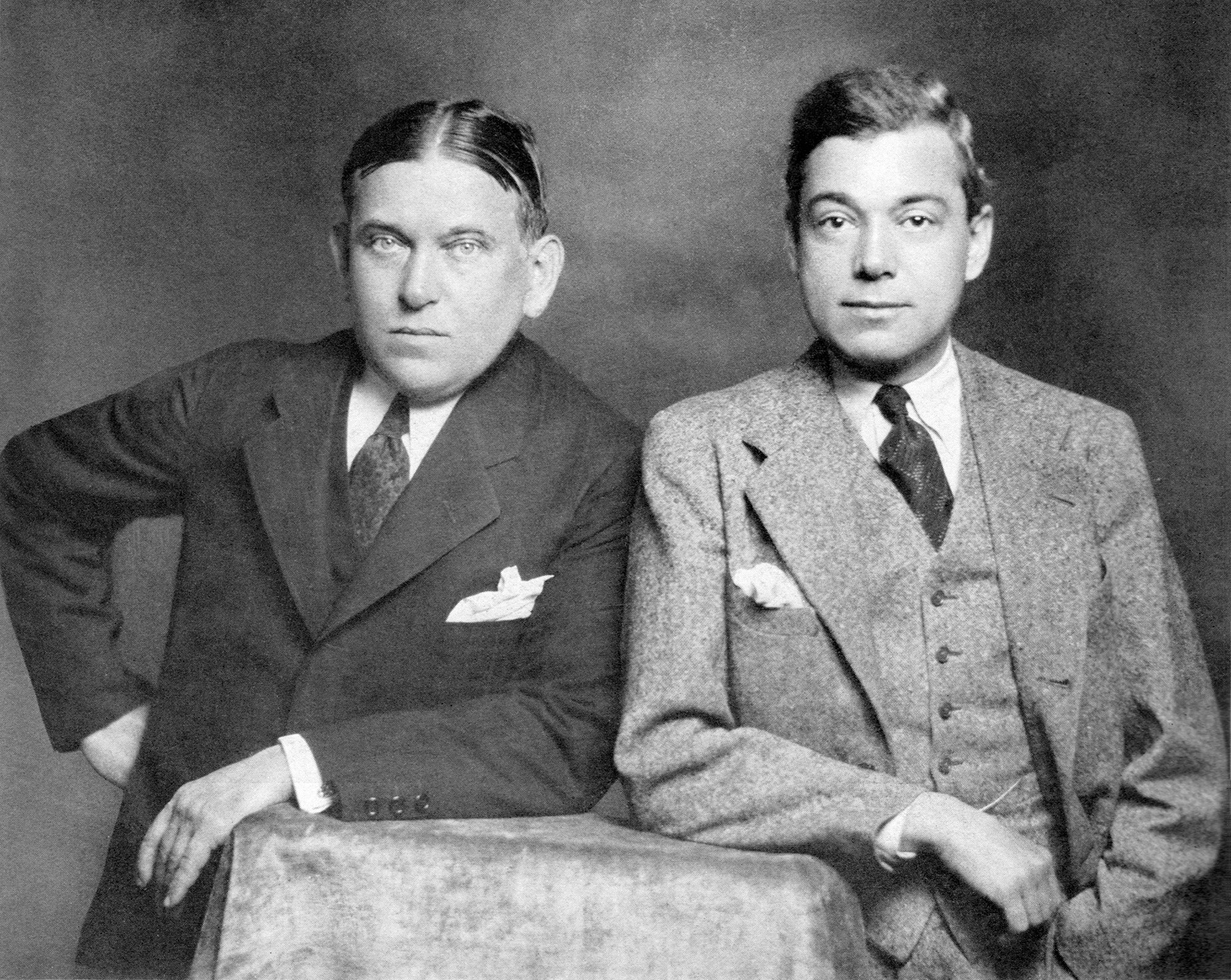
Pulp magazines were designed to be disposable. Named after the cheap pulpwood paper they were printed on, they aimed for a mass audience—particularly working-class readers—and specialized in genres like detective, erotica, science fiction, and romance. Lurid, over-the-top cover art made the pulps both notorious and iconic.
Weekly Newsletter
In her examination of the mostly white working-class men who made up the readership of Black Mask and other detective pulps, American Studies scholar Erin A. Smith stresses how such magazines traded on an ideal of tough masculinity. This was combined with ads for self-improvement via “job training by correspondence, body-building programs, elocution lessons, and conduct manuals.” Here’s your cake, these pulps seem to say, and here’s how to buy the skills you need to eat it.
Black Mask was touted, in the words of its founders, to publish “the best stories available of adventure, the best mystery and detective stories, the best romances, the best love stories, and the best stories of the occult.” Mencken and Nathan cashed in after a mere eight issues, turning a handsome profit. Then, under the editorships of George Sutton (1922-1924), Philip Cody (1924-1926), Joseph Shaw (1926-1936), and Fanny Ellsworth (1936-1940), Black Mask turned away from that broader genre approach. Crime and detective fiction became its beat.
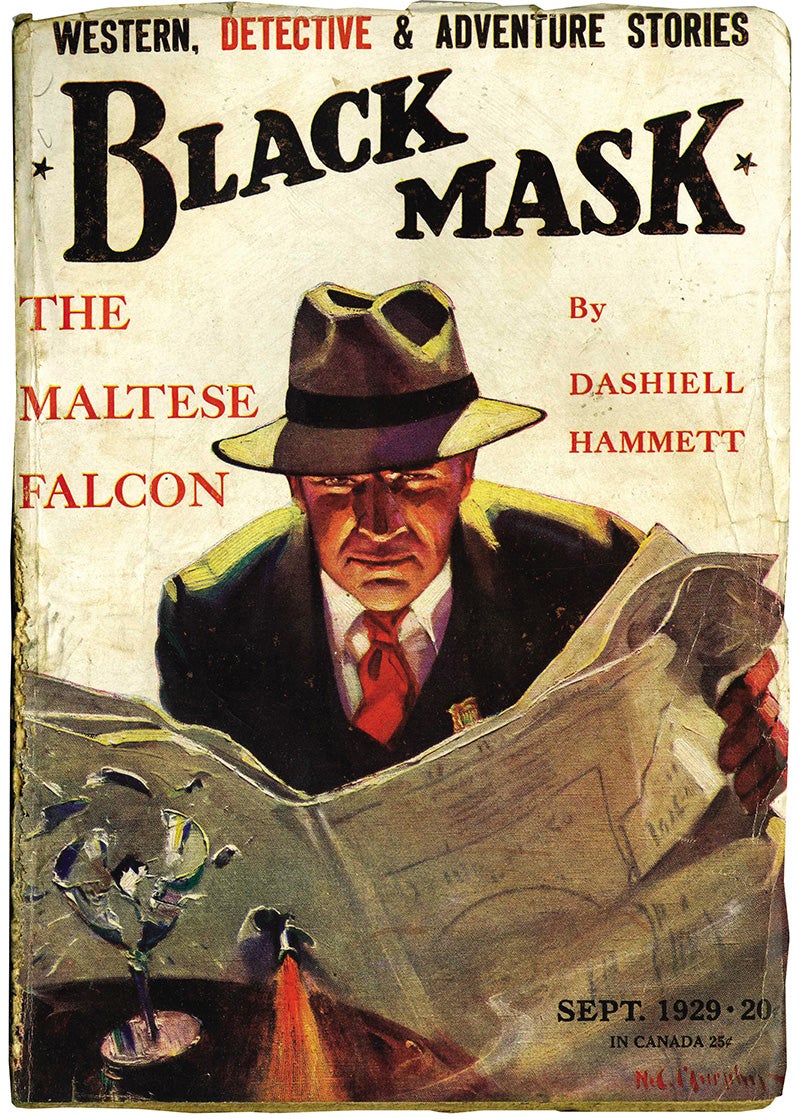
Gabrielle Dean writes that the titular black mask seems to have been adapted from the The Smart Set, which sometimes featured a swanky, masked cosmopolitan character named Mephisto on the cover. The mask symbolized mystery, sophistication, adult sexuality: it showed up on both male and female characters on The Smart Set’s covers and ads. In the pages of the pulp, however, the mask took on “more ominous associations” as the ’20s progressed.
Black masks weren’t the only masks in the pages of the early Black Mask. In 1923, the magazine ran a multi-issue “Klan Forum” bringing together articles, letters, and fiction debating the Ku Klux Klan and the meaning of “Americanism.” The Klan was then riding high as a major force of White Anglo Saxon Protestant reactionary populism, with membership skyrocketing and avowed Klan members elected to office around the country. Anti-Black like its first, post-Civil War incarnation, the Klan of the 1920s also targeted immigrants, Catholics, Jews, and urbanites in general.
Another American Studies specialist, Sean McCann, explains that Black Mask’s forum was a way to cash in on a popular phenomenon. But it wasn’t just that. The Klan, continues McCann, championed “a social fantasy that closely resembled the mythology implicit in hard-boiled crime fiction.”
“Like the heroes of Black Mask’s ‘new type of detective story,’ Klan ideologues during the 1920s railed against class parasites and social decadence. Like the jaundiced private detective, they, too, spotted the signs of corruption in urban vice and moral decline. And, like the hard-boiled heroes, Klansmen imagined that the only effective response to social ills was a form of vigilante justice that imposed order on the confusions of an urbanizing society.”
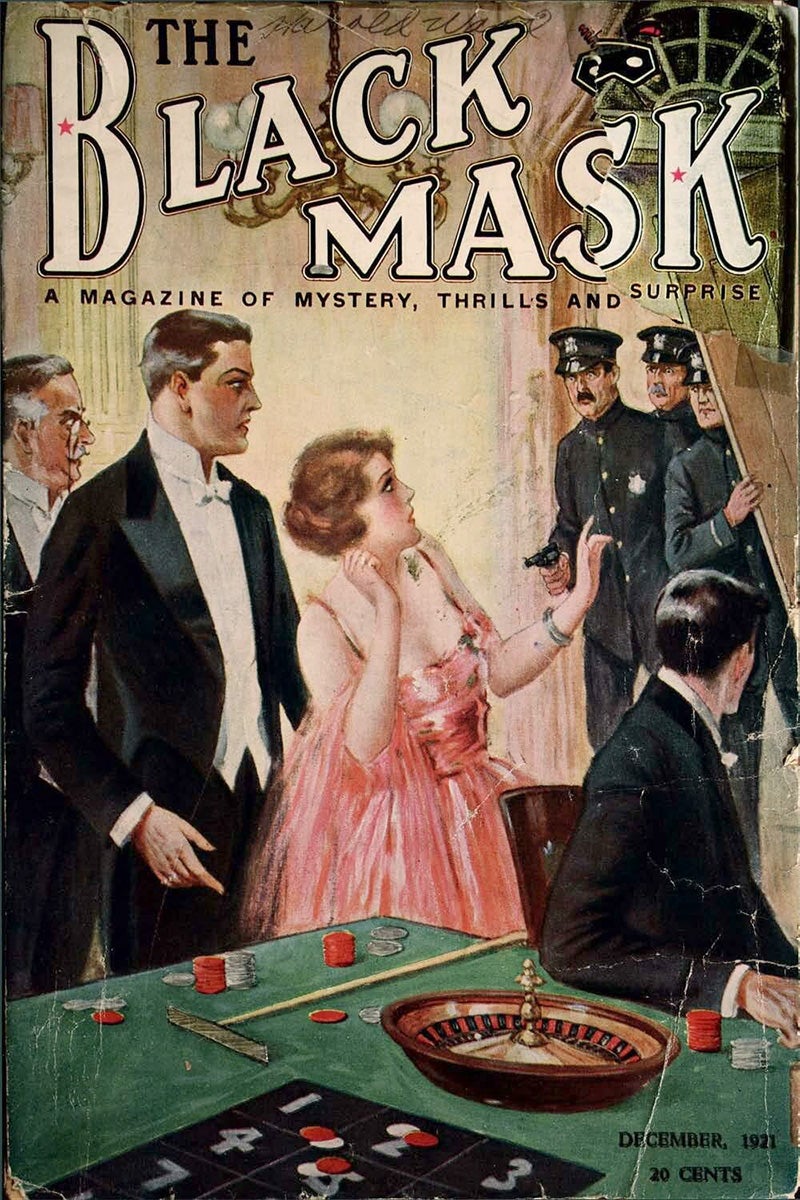
Some of the Klan forum fiction was decidedly pro-KKK. But with Race Williams, Carroll John Daly’s hero, introduced in the story “Knights of the Open Palm” in June 1923 “hard-boiled crime fiction began life directly opposed to the Klan’s nativist populism.” Daly isn’t as well-remembered today as Hammett, even though he’s been credited with writing the first hard-boiled story. As McCann notes, “Race Williams” is tellingly named. Williams is white but considers the Klan’s race-centric ideas bunk. As in Hammett’s world, in Daly’s everyone is equal—in their murderous impulses, greed, and treachery.
Through Race Williams, Daly mocks the “Invisible Empire,” of the Klan. Punching and shooting it out with its ornately robed members, Race Williams views the Klan as nothing more than a nasty racket. For all their talk of fighting a corrupt society, the Klan are terrorists fomenting what Daly plainly recognized as “religious and race hatred” while lining their own pockets.
Unlike Race Williams, Hammett’s the Continental Op, “a fat, middle-aged, hard-boiled, pig-headed guy,” doesn’t directly battle the Klan in any of his stories. Ideologically, however, the always anonymous Op wasn’t having any of their communitarian whiteness either. “Poisonville,” the mining town in Hammett’s first novel Red Harvest, is so dirty that race is immaterial, unreadable—everybody is as gray as the polluted skies.
McCann calls Daly’s and Hammett’s perspective “hard-boiled populism.” It’s a perspective that has nothing but contempt for the social cohesion and unified racial/religious community the Klan claimed to champion. Self-interest is the name of the game, and the Klan’s nativist authoritarianism is just another gangland enemy. McCann doesn’t think Daly and Hammett opposed the Klan out of any sort of appreciation for diversity or tolerance, but rather because they “assumed that all people were driven by a self-interest that made dreams of racial obligation absurd.”
It’s problematic to paint such hard-boiled boys as Race Williams and the Continental Op as heroic figures today. Intensely cynical, alienated, radically individualistic, and hyper-violent, they are ambiguous figures. They’re in the corner fighting against Klanamerica, true, but theirs is a world so “irredeemably corrupt, violent, and irrational,” as scholar J. A. Zumoff describes it in his analysis of Hammett’s writings, that they may not appeal any more than the Klan does.
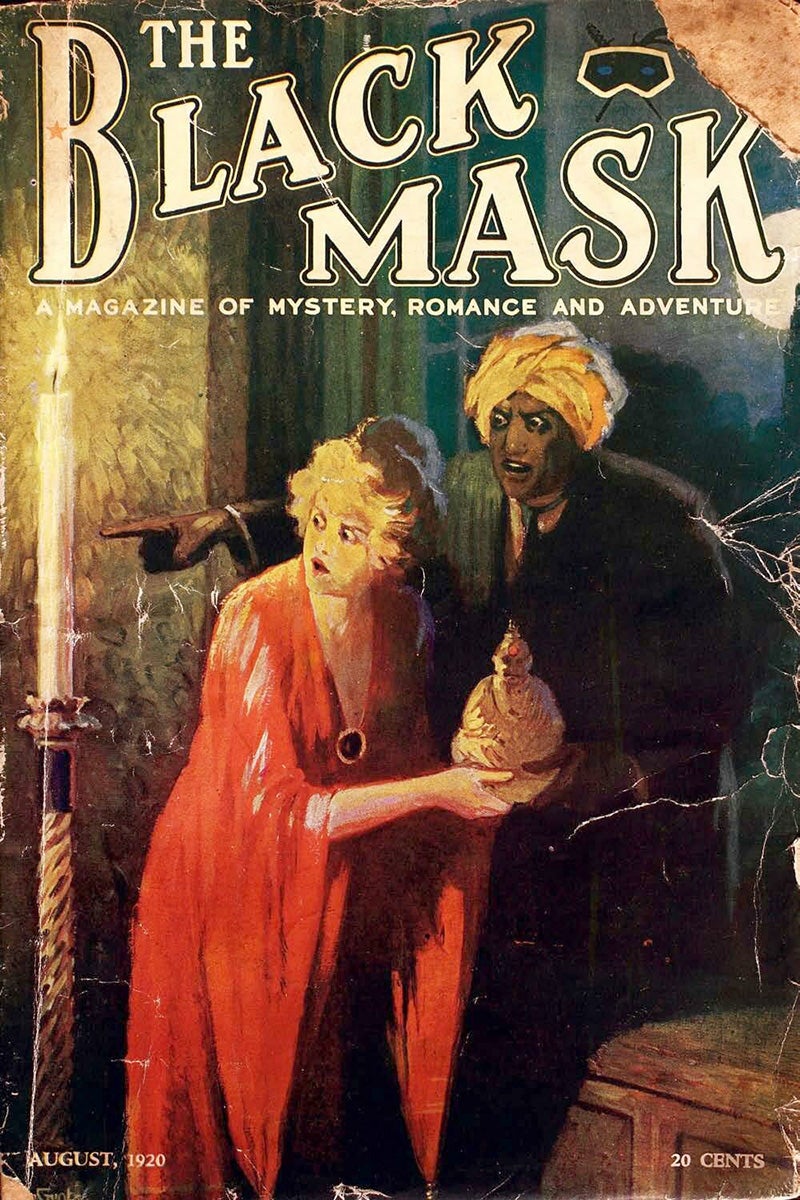
Hammett’s case is particularly interesting because he is usually remembered as a man of the left. Hounded by Red-hunters in the decade before his 1961 death, Hammett briefly served time for contempt of court in 1951 after he refused to name names before a federal judge. Some therefore read him backwards, as it were, to highlight the leftist credentials in his fiction. But, as Zumoff stresses, “Hammett wrote his major works before he became a radical.” His publishing history largely ends in 1934, a few years before he seems to have joined the Communist Party. Hammett was a Pinkerton Detective Agency employee until 1922, meaning he was on the side of militant capital in the violent war waged against labor through the Gilded Age and the Progressive Era. His writing was “distinctly conservative, perhaps even reactionary,” explains Zumoff. In its “use of irrationality,” Zumoff continues, it was “closer to fascism” than to anything else.
The Continental Op and Sam Spade, the protagonist of Hammett’s Maltese Falcon who’s nastier in print than the unsentimental shamus portrayed by Humphrey Bogart on screen, both emphasize the individual rather than collective. That’s decidedly un-Marxist…but then neither is it Klannist.
As it happened, the Klan hit its peak soon after the Black Mask forum. The organization was seriously weakened by all the scandals: membership and influence plummeted in the late 1920s. With the strict immigration control law of 1924, however, nativists achieved one of their primary goals: severely limiting the number of non-Northern European immigrants allowed into the United States.
The original Black Mask ceased publication in 1951, but its influence lived on. Hammett’s Red Harvest, initially serialized in Black Mask in 1927-1928, is a paradigmatic example of this influence. The novel inspired movies directed by Akira Kurosawa (Yojimbo, 1961), Sergio Leone (A Fistful of Dollars, 1964), and more than one Joel and Ethan Coen production. The brothers’ first film was entitled Blood Simple after a line from Red Harvest: “If I don’t get away soon I’ll be going blood-simple like the natives. There’s been what? A dozen and a half murders since I’ve been here.” The novel’s body count makes it seem as timely as anything in today’s post-Tarantino generation of blood-simple entertainment.
Hammett and Daly were followed down the mean streets by Raymond Chandler, James M. Cain, Mickey Spillane, Chester Himes, Ross Macdonald, Sue Grafton, James Ellroy, and Sara Paretsky, to name a few heirs. Of course, Daly and Hammett don’t just echo in crime fiction. Dark, noir, or hard-boiled adaptations can be found across the genre waterfront today amidst pervasive themes of conspiracy and corruption. Meanwhile, the centenary of the birth of Black Mask as a force that punched above its pulp weight coincides with a nativist revival, with Klansmen and Nazis resurgent and once again legitimized by mainstream politicians.
